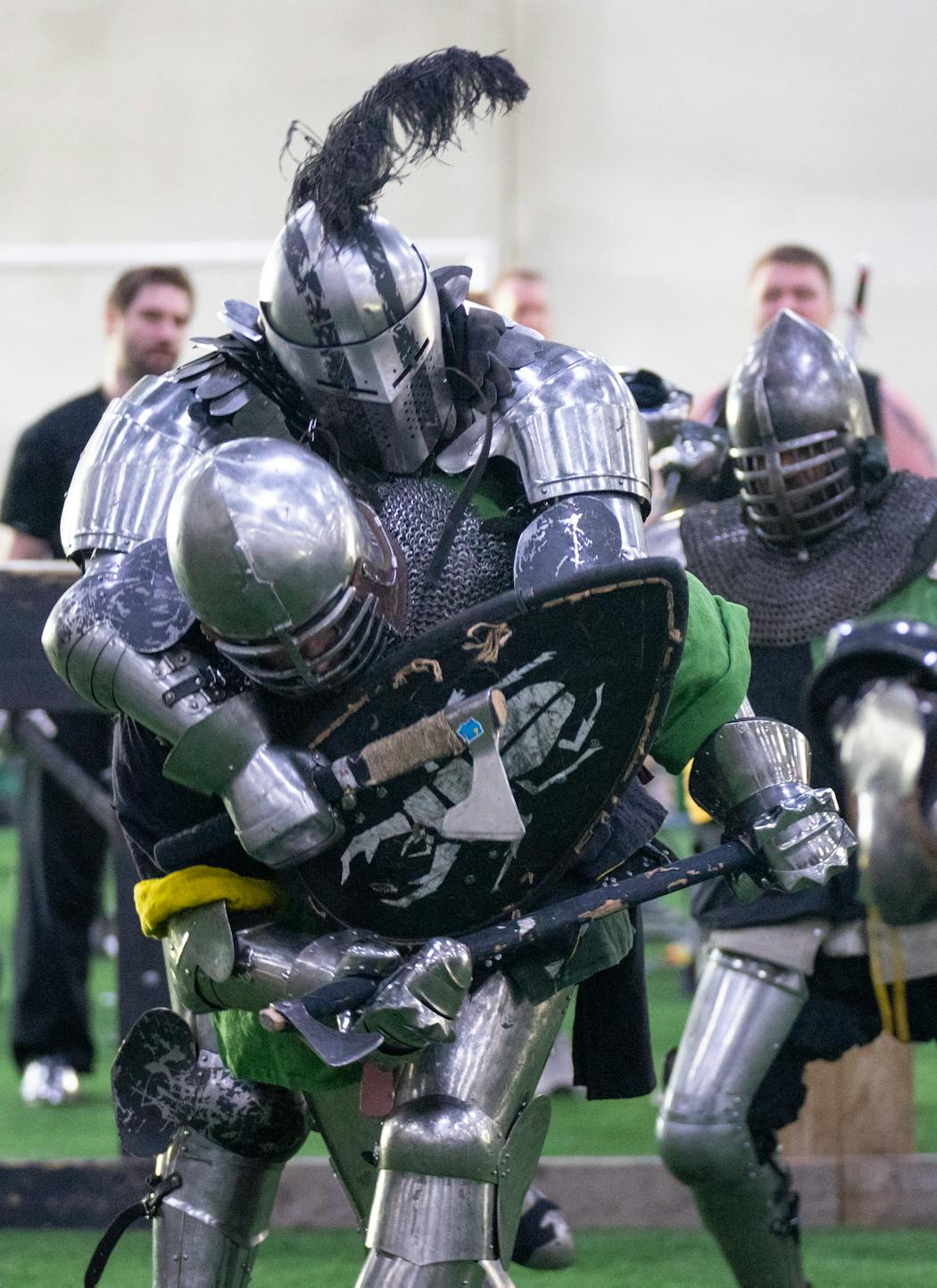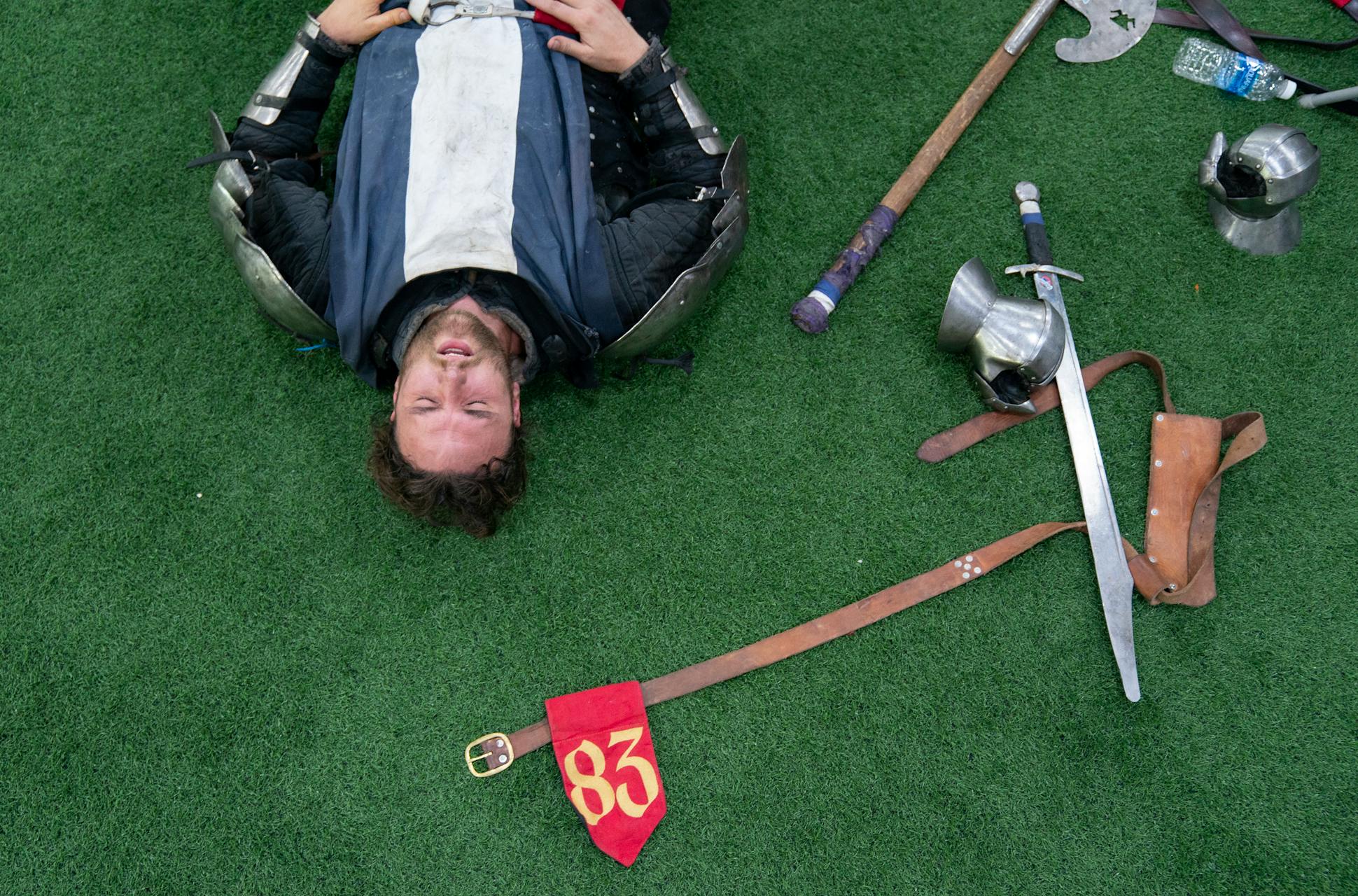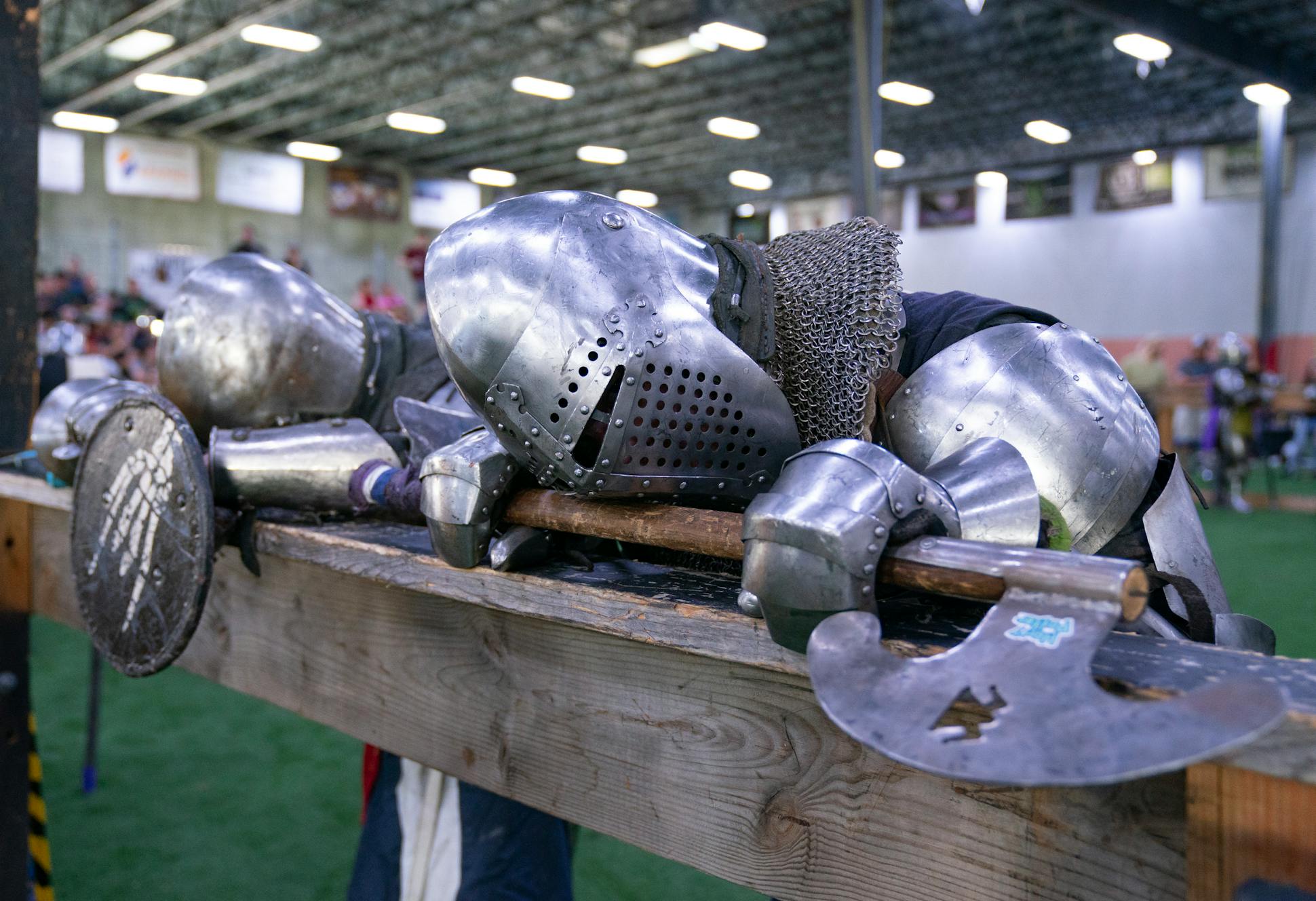Nearly 70 knights in shining armor from around the country gathered at an arena in ye olde kingdom of Ramsey. Since there weren't any dragons to slay, they spent the better part of the day punching, kicking, head-butting and hammering on each other with broadswords, axes and clubs.
This isn't cosplay, reenacting or Renaissance Festival entertainment. It's a real — and violent — sport in which teams of combatants outfit themselves in medieval-style armor and bash each other with blunted metal weapons. The win goes to the team with the last knight standing.
"It's full speed, full steel, full contact," said Josh Berg, a vice captain of the Twin Cities Wyverns, an armored fighting group. It's also potentially dangerous.
So what's the appeal?
"I always wanted to be a knight growing up," said Berg, 45, of Minneapolis. "I was told that doesn't exist. But I found it. It's right here. I think it's the greatest thing I've ever been part of."
Armored combat is also called steel fighting or buhurt, from an old French word, béhourd, which, depending on the source, means "tournament" or "to wallop." The sport, which got its start in Eastern Europe in the late 1990s, has been gradually spreading around the world.
There are about 27,000 members in the U.S., according to the Armored Combat Sports website. The Wyverns (named after a mythical dragonlike creature) currently have 26 dues-paying members, said Patrick Lockren, a 31-year-old electrician from Eden Prairie. The team was formed about eight years ago.
While many participants describe themselves as nerds, the sport also attracts people who've played other full-contact sports like football, rugby, wrestling and martial arts.
Charles Harris, who came to the Minnesota melee from Fort Worth, Texas, said it appeals to his nerdy, video gaming side, but has similarities to football, which he played for years.
"I like swinging the axes, and the kinetic feel of it, as well as the competition," Harris said. "This is probably the coolest community of nerds I've been with."
Luke Salzer, a 37-year-old Minneapolis resident, said the sport's historical roots connect to the high school history teacher in him, while the physical aspects appeal to his rugby, wrestling and mixed martial arts side.
"It's all the good parts of mixed martial arts, but my armor takes the damage instead of me," Salzer said.
Lars Jorgenson, a 27-year-old team member from Hudson, Wis., is in it for the battle. "We're the bucket heads," he said. "We just want to fight and fight in armor."
100 pounds of steel
The armor typically is custom-made of stainless steel or titanium in Ukraine (one of the early adopters of steel fighting) or Mexico. Suits cost between $2,000 and $10,000 and can weigh more than 100 pounds.
This may be one of the few sports where competitors bring along an anvil and ball peen hammers so they can make equipment repairs during tournaments.
For the War in the North, four teams — from Texas, Des Moines, the Twin Cities Wyverns and a joint team from Colorado and Missouri — participated in the Aug. 12 event at the Adrenaline Sports Center in Ramsey, a cavernous artificial-turf fieldhouse that normally hosts soccer.
The tournament was a series of melees, in which two teams, each fielding 10 people, would enter a 38- by 38-foot wood-fenced arena called a list, and proceed to attack.
The goal is to eliminate the other team's players by throwing or knocking them down, or forcing them to touch the turf with a knee or hand. Or you can simply pole-axe an opponent hard enough that they sit down voluntarily.
If you knock out all the opponents on the field and at least one person on your team is left standing, you win that round. You win a match by winning three out of five rounds.
Some teams have strategies and run set plays, but the competitions can devolve into bumper cars with battle axes, as knights ram, wrestle and whale away at each other.
"Sometimes it's just like a 2-minute-long car crash," said David Arditi, a software professional from Texas.
The Minnesota event attracted an audience of about 200, who cheered like a football game from the bleachers as the arena filled with the clang and clash of swords hitting shields and the clatter of armored men hitting the turf.
Yellow-shirted tournament marshals wielding poles with yellow flags refereed the fighting to prevent illegal hits to the groin, the back of the knee, the feet, along the spine and the back of the neck. Choking and direct sword thrusts are also prohibited. And marshals make sure the edges on the weapons are sufficiently dull.
Every contestant wears a helmet with anti-concussion padding.
Some players consider it a safer sport than football. But as the tournament went on, the injuries mounted — a broken rib, heat exhaustion and a couple of potential concussions, said Steve Rogers, an EMT from Minneapolis who staffed the event.
"I've been running around like a chicken with my head cut off," said Rogers. "I've never gone through this many ice packs, even in a judo tournament."
One competitor was even hauled off in an ambulance after his legs went numb following a blow to the back. (Anti-inflammation medication relieved the swelling that had caused a pinched nerve.)
Feeling like a knight
Getting walloped isn't the only threat. Competitors say it's hot and disorienting inside the armor, hard to breathe and hard to see.
When a round ended, the fighters often slumped over, panted and called for water. Sometimes they needed help getting out of the arena or had to crawl away.
The first time Arditi tried armored combat, "I was fighting for my life, trying not to throw up in my helmet."
But that's exactly why the sport is so compelling.
"This feels real," said Dietrich Dressel, a 27-year-old Wyverns member from White Bear Lake. "This is what makes me feel like a knight."
When the tournament concluded, the team from Texas was declared the winner, followed by the Twin Cities Wyverns.
And Spence Fasching, the Wyverns team captain, declared the event "a huge success."
"We've already started planning next year's War in the North," he said. "All teams that attended this year want to return."






